Ice Age Animals, Plants, People and Geology
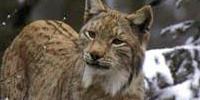
Ice Age Animals - As the last great ice age (the fourth, or Wurm) began, the advancing ice of the Wurm glaciation forced tundra animals further south into western europe. The increasingly cold conditions altered the vegetation as well. The spruce, fir, and arctic willow were now found only in the more sheltered river valleys, while the rest of the landscape was mostly deforested.
 Although most scientists with knowledge of the field think that the Australian megafauna, animals such as the giant kangaroo, the swamp cow and the diprotodon, were hunted to death by the first humans to migrate to Australia, perhaps 50 000 years ago. However some scientists still disagree, and put forward the hypothesis that climate change was to blame. However a crucial question must be asked: if people did hunt megafauna to extinction, how much evidence of killing should we now be able to get from archaeological sites? A new paper by archaeologists Todd Surovell and Brigid Grund, Surovell et al. (2012), suggests the answer to that question is 'very little or none'.
Although most scientists with knowledge of the field think that the Australian megafauna, animals such as the giant kangaroo, the swamp cow and the diprotodon, were hunted to death by the first humans to migrate to Australia, perhaps 50 000 years ago. However some scientists still disagree, and put forward the hypothesis that climate change was to blame. However a crucial question must be asked: if people did hunt megafauna to extinction, how much evidence of killing should we now be able to get from archaeological sites? A new paper by archaeologists Todd Surovell and Brigid Grund, Surovell et al. (2012), suggests the answer to that question is 'very little or none'.
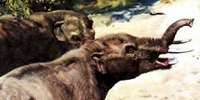 Coming originally from Africa, the mastodons invaded Europe and Asia 18 million years ago. They made their way to North America via the Bering Bridge 10 million years ago and finally reached South America two million years ago, after the isthmus of Panama was formed roughly three million years ago, an event that made the recent ice ages possible. The development of the tusks and of the trunk reflects the evolution of the mastodons during the Miocene, which lasted from 23 million years ago to 5 million years BP.
Coming originally from Africa, the mastodons invaded Europe and Asia 18 million years ago. They made their way to North America via the Bering Bridge 10 million years ago and finally reached South America two million years ago, after the isthmus of Panama was formed roughly three million years ago, an event that made the recent ice ages possible. The development of the tusks and of the trunk reflects the evolution of the mastodons during the Miocene, which lasted from 23 million years ago to 5 million years BP.
 The Manis Mastodon - A newly analysed mastodon rib bone shows that Native Americans were using bone-pointed weapons to take down big game nearly a thousand years earlier than thought, according to a new study. Images of the rib show a broken bone projectile point still stuck where a hunter drove it in 13 800 years ago. The rib was found near the town of Sequim on Washington’s Olympic Peninsula, in the late 1970s. Radiocarbon analysis, DNA samples, genetics work, and other modern techniques recently revealed its true age.
The Manis Mastodon - A newly analysed mastodon rib bone shows that Native Americans were using bone-pointed weapons to take down big game nearly a thousand years earlier than thought, according to a new study. Images of the rib show a broken bone projectile point still stuck where a hunter drove it in 13 800 years ago. The rib was found near the town of Sequim on Washington’s Olympic Peninsula, in the late 1970s. Radiocarbon analysis, DNA samples, genetics work, and other modern techniques recently revealed its true age.
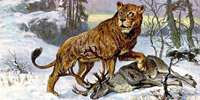 The cave lion is known from Paleolithic cave paintings, ivory carvings, and clay figurines. These representations indicate that cave lions had rounded, protruding ears, tufted tails, possibly faint tiger-like stripes, and that at least some had a ruff or primitive mane around their neck, indicating males. The cave lion received its common name because large quantities of its remains are found in caves, but it is doubtful whether they lived in them. They probably preferred conifer forests and grasslands, where medium-sized to large herbivores occurred.
The cave lion is known from Paleolithic cave paintings, ivory carvings, and clay figurines. These representations indicate that cave lions had rounded, protruding ears, tufted tails, possibly faint tiger-like stripes, and that at least some had a ruff or primitive mane around their neck, indicating males. The cave lion received its common name because large quantities of its remains are found in caves, but it is doubtful whether they lived in them. They probably preferred conifer forests and grasslands, where medium-sized to large herbivores occurred.
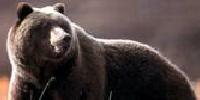
The bear and cavebear in fact, myth and legend

Mammoths, Elephants and the Wooly Rhinoceros
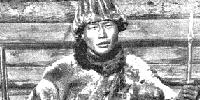
The Tungus - reindeer herders of the Siberian far north
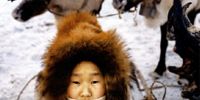
Modern Reindeer People
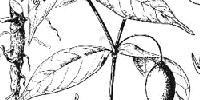
The Sacred Root

Golden Thread
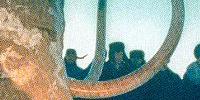
Frozen Mammoth discovery
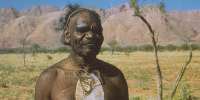
Australian Aboriginal art, trade routes, tools, and water sources in the desert. An Australian Aboriginal person is a person of Aboriginal descent, albeit mixed, who identifies themselves as such and who is recognised by the Aboriginal community as an Aboriginal.

Geology for Earth Children fans






 Although most scientists with knowledge of the field think that the Australian megafauna, animals such as the giant kangaroo, the swamp cow and the diprotodon, were hunted to death by the first humans to migrate to Australia, perhaps 50 000 years ago. However some scientists still disagree, and put forward the hypothesis that climate change was to blame. However a crucial question must be asked: if people did hunt megafauna to extinction, how much evidence of killing should we now be able to get from archaeological sites? A new paper by archaeologists Todd Surovell and Brigid Grund, Surovell et al. (2012), suggests the answer to that question is 'very little or none'.
Although most scientists with knowledge of the field think that the Australian megafauna, animals such as the giant kangaroo, the swamp cow and the diprotodon, were hunted to death by the first humans to migrate to Australia, perhaps 50 000 years ago. However some scientists still disagree, and put forward the hypothesis that climate change was to blame. However a crucial question must be asked: if people did hunt megafauna to extinction, how much evidence of killing should we now be able to get from archaeological sites? A new paper by archaeologists Todd Surovell and Brigid Grund, Surovell et al. (2012), suggests the answer to that question is 'very little or none'. Coming originally from Africa, the mastodons invaded Europe and Asia 18 million years ago. They made their way to North America via the Bering Bridge 10 million years ago and finally reached South America two million years ago, after the isthmus of Panama was formed roughly three million years ago, an event that made the recent ice ages possible. The development of the tusks and of the trunk reflects the evolution of the mastodons during the Miocene, which lasted from 23 million years ago to 5 million years BP.
Coming originally from Africa, the mastodons invaded Europe and Asia 18 million years ago. They made their way to North America via the Bering Bridge 10 million years ago and finally reached South America two million years ago, after the isthmus of Panama was formed roughly three million years ago, an event that made the recent ice ages possible. The development of the tusks and of the trunk reflects the evolution of the mastodons during the Miocene, which lasted from 23 million years ago to 5 million years BP. The Manis Mastodon - A newly analysed mastodon rib bone shows that Native Americans were using bone-pointed weapons to take down big game nearly a thousand years earlier than thought, according to a new study. Images of the rib show a broken bone projectile point still stuck where a hunter drove it in 13 800 years ago. The rib was found near the town of Sequim on Washington’s Olympic Peninsula, in the late 1970s. Radiocarbon analysis, DNA samples, genetics work, and other modern techniques recently revealed its true age.
The Manis Mastodon - A newly analysed mastodon rib bone shows that Native Americans were using bone-pointed weapons to take down big game nearly a thousand years earlier than thought, according to a new study. Images of the rib show a broken bone projectile point still stuck where a hunter drove it in 13 800 years ago. The rib was found near the town of Sequim on Washington’s Olympic Peninsula, in the late 1970s. Radiocarbon analysis, DNA samples, genetics work, and other modern techniques recently revealed its true age.  The cave lion is known from Paleolithic cave paintings, ivory carvings, and clay figurines. These representations indicate that cave lions had rounded, protruding ears, tufted tails, possibly faint tiger-like stripes, and that at least some had a ruff or primitive mane around their neck, indicating males. The cave lion received its common name because large quantities of its remains are found in caves, but it is doubtful whether they lived in them. They probably preferred conifer forests and grasslands, where medium-sized to large herbivores occurred.
The cave lion is known from Paleolithic cave paintings, ivory carvings, and clay figurines. These representations indicate that cave lions had rounded, protruding ears, tufted tails, possibly faint tiger-like stripes, and that at least some had a ruff or primitive mane around their neck, indicating males. The cave lion received its common name because large quantities of its remains are found in caves, but it is doubtful whether they lived in them. They probably preferred conifer forests and grasslands, where medium-sized to large herbivores occurred. 


